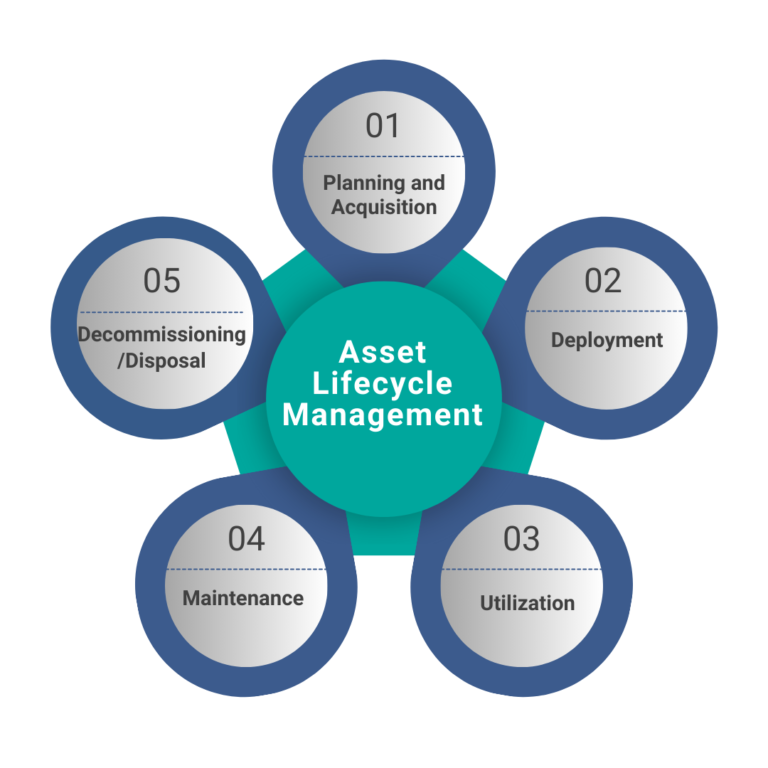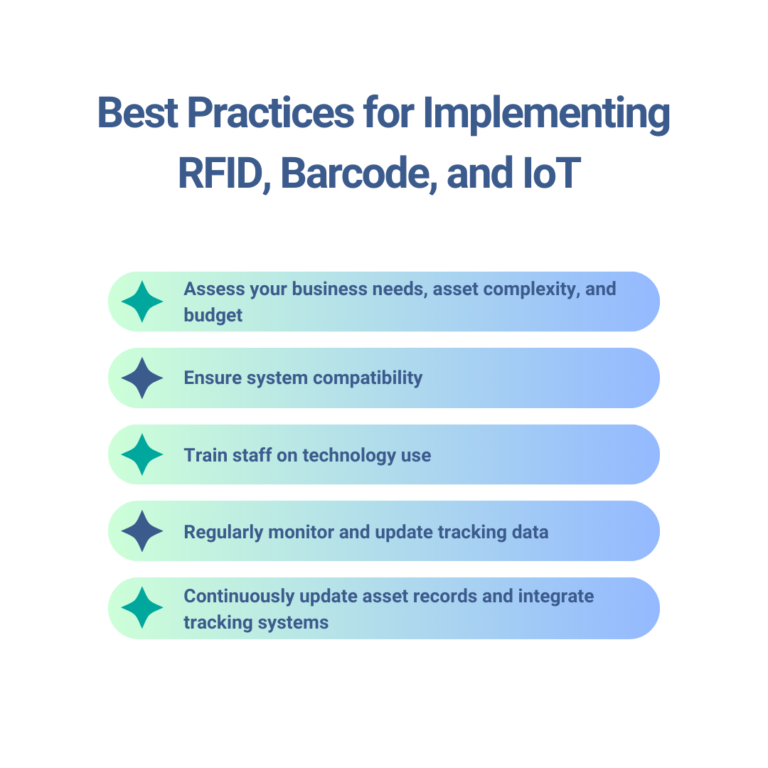Effectively managing the lifecycle of critical assets has become essential for maintaining operational efficiency and controlling costs. Asset Lifecycle Management (ALM) helps oversee every stage of an asset’s life, ensuring that you can maximize value while minimizing disruptions.
Technology keeps evolving, and along with it, oil and gas and industrial service businesses are becoming more reliant on technology. The integration of advanced tools such as RFID, barcode scanning, and IoT devices is revolutionizing how organizations track and manage their industrial assets in real-time.
Let’s explore the transformative impact of RFID, barcode, and IoT technology on asset lifecycle management and how they contribute to smarter, more efficient operations.
Asset Lifecycle Management is a comprehensive process that guides the journey of an asset from its initial acquisition to decommissioning or disposal. It ensures that every phase of an asset’s lifecycle is optimized for performance, cost-efficiency, and longevity.

The five phases of ALM include:
Managing assets through these stages manually or with outdated methods presents significant challenges. Organizations can miss maintenance, struggle with inaccurate record-keeping, and misplace assets. All of these factors can lower efficiency and lead to increased costs and risks.
This is where RFID, barcode scanning, and IoT technologies offer game-changing solutions.
RFID (Radio Frequency Identification) systems communicate with tags attached to assets. This allows field service organizations to monitor their location, status, and condition without requiring direct line-of-sight scanning.
The core advantages of RFID for asset management include:
RFID enhances every phase of the asset lifecycle:
Barcode scanning is one of the most popular methods for tracking assets. It offers a straightforward and cost-effective solution for asset lifecycle management.
The process involves attaching a barcode to an asset and using a handheld device or smartphone to scan it. Each scan captures data about the asset, such as its identification number, location, and status. Then, it transmits this information to a central database for easy tracking and monitoring.
Compared to RFID, barcode scanning is a more affordable and simpler option. It can be particularly beneficial to businesses with smaller budgets or less complex tracking needs.
RFID systems offer greater automation and do not require line-of-sight for scanning. Meanwhile, barcodes need to be manually scanned with a direct line of sight, which can be more time-consuming.
However, barcodes are cheaper to implement and maintain. This makes them ideal for operations where cost is a critical factor and where assets do not require continuous, real-time tracking.
Barcode scanning enhances asset lifecycle management in several ways:
The Internet of Things (IoT) has become a pivotal technology in asset lifecycle management. It enables organizations to monitor asset conditions in real time through connected devices.
IoT sensors collect critical data such as temperature, vibration, usage patterns, and location, providing continuous insights into asset performance. This empowers businesses to make informed decisions, improve operational success, and extend the lifespan of their assets.

IoT enhances asset lifecycle management by offering actionable data at every stage:
Combining RFID, barcode scanning, and IoT technologies can offer a comprehensive and versatile approach to asset lifecycle management. It can allow field service organizations to tailor their tracking solutions to specific needs.
Each technology brings unique strengths to the table. Together, they can create a powerful system that offers both high-level automation and cost-effective solutions for a range of assets.
Implementing the right solution for each phase of the asset lifecycle ensures maximum efficiency, accuracy, and cost-effectiveness. Below are some best practices to guide this process:

By following these best practices, your field service organization can make smarter decisions about which asset-tracking technology to implement. You can also ensure that these systems effectively support your daily operations. This not only improves asset visibility and lifecycle management but also leads to more efficient maintenance, reduces downtime, and saves costs.
Implementing RFID, barcode scanning, and IoT technologies significantly enhances asset lifecycle management from acquisition to decommissioning. Each technology offers unique strengths that together can provide comprehensive visibility into asset location, performance, and condition.
Schedule a FieldEquip demo to optimize your asset lifecycle management and drive operational efficiency.
Would you like to have a free demo or have any questions about FieldEquip?
US Corporate Headquarters 1011 S. Hwy. 6, Suite 117 Houston Texas 77077 US